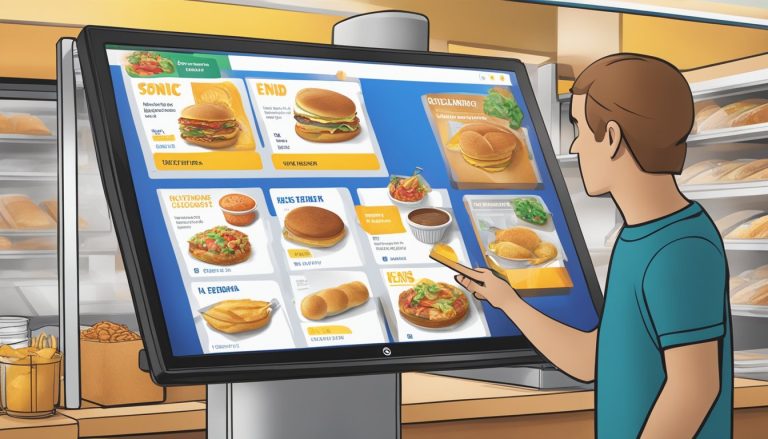Fast-food breakfast menus have sparked a culinary revolution in American homes. Since the introduction of innovative morning offerings by chains like Taco Bell and Chick-fil-A, consumers have been inspired to recreate and adapt these dishes in their own kitchens. The influence of fast-food breakfast on home cooking trends has led to a surge in experimentation with unique ingredient combinations and flavors for morning meals.
This shift in breakfast habits has been further amplified by changing work patterns. With more people working from home, there’s been an increase in at-home breakfast preparation. Consumers are now seeking ways to recreate the convenience and taste of fast-food breakfast items while incorporating healthier ingredients and personalized touches.
The impact of fast-food breakfast on home cooking extends beyond mere imitation. It has encouraged a broader exploration of breakfast possibilities, challenging traditional notions of what constitutes a morning meal. As a result, breakfast trends now include a diverse range of options that blend fast-food inspiration with home-cooked creativity, reflecting evolving consumer preferences for both convenience and quality in their morning routines.
Historical Context of Breakfast

Breakfast has undergone significant changes throughout history, evolving from simple morning sustenance to a diverse array of options influenced by cultural shifts and technological advancements.
Evolution of Breakfast Foods
Ancient civilizations typically consumed simple morning meals consisting of bread, cheese, and fruits. In medieval Europe, breakfast became more substantial, incorporating meats and ale. The Industrial Revolution brought new breakfast foods like cereals and pastries, catering to the needs of factory workers.
World Wars I and II significantly impacted breakfast habits due to food shortages and rationing. This led to the development of shelf-stable options and increased reliance on canned goods. Post-war prosperity in the mid-20th century saw a rise in packaged breakfast products, emphasizing convenience for busy families.
Health trends in recent decades have influenced breakfast choices, promoting whole grains, fruits, and protein-rich options. This shift has led to the popularity of items like Greek yogurt, smoothie bowls, and avocado toast.
Rise of Fast-Food Restaurants
The 1970s marked a turning point with the introduction of breakfast menus in quick-service restaurants. McDonald’s launched its Egg McMuffin in 1972, revolutionizing on-the-go morning meals. This move sparked fierce competition among fast-food chains to capture the breakfast market.
Fast-food breakfast offerings expanded rapidly, featuring items like breakfast sandwiches, burritos, and hash browns. These convenient options appealed to time-pressed consumers and commuters.
The popularity of drive-thru service further cemented fast-food’s role in morning routines. Chains like Dunkin’ Donuts and Starbucks capitalized on the trend, combining breakfast items with coffee drinks to create a one-stop morning solution.
Breakfast Menu Offerings at Fast-Food Outlets
Fast-food chains have expanded their breakfast options significantly in recent years, catering to a growing demand for convenient morning meals. These menus now feature a diverse array of items designed to appeal to various tastes and dietary preferences.
Breakfast Sandwiches and Tacos
Breakfast sandwiches have become a staple at fast-food restaurants. McDonald’s Egg McMuffin, introduced in 1971, paved the way for this trend. Today, chains offer variations with different breads, meats, and egg styles. Chick-fil-A’s chicken biscuit has influenced competitors to incorporate poultry into their morning offerings.
Breakfast tacos have gained popularity, particularly at Taco Bell. These handheld items typically include eggs, cheese, and meat wrapped in a soft tortilla. Some chains offer vegetarian options with ingredients like potatoes or plant-based proteins.
Many restaurants now provide customization options, allowing customers to add or remove ingredients to suit their preferences.
All-Day Breakfast Options
McDonald’s introduction of all-day breakfast in 2015 marked a significant shift in the fast-food industry. This move challenged traditional mealtime norms and influenced other chains to extend their breakfast hours.
All-day breakfast menus often include a selection of popular morning items available throughout the day. These may feature:
- Breakfast sandwiches
- Pancakes or waffles
- Oatmeal or yogurt parfaits
- Hash browns or other potato sides
Some restaurants offer a limited all-day breakfast menu, while others provide their full morning selection at all hours.
Nutrition and Breakfast Items
Fast-food chains are increasingly focusing on healthier breakfast options to meet consumer demand. Many now offer:
- High-protein choices like egg white sandwiches or Greek yogurt parfaits
- High-fiber options such as oatmeal or whole grain wraps
- Fresh fruit cups or smoothies
Some restaurants display calorie counts on their menus to help customers make informed choices. Others have introduced smaller portion sizes or “mini” versions of popular breakfast items.
Despite these efforts, many fast-food breakfast options remain high in calories, sodium, and saturated fat. Consumers are advised to review nutritional information when making selections.
Impact on Home Cooking

Fast-food breakfast offerings have significantly influenced home cooking trends. Many consumers now recreate their favorite restaurant meals in their own kitchens, leading to changes in morning meal preparation and recipe sharing.
Shift in Home Breakfast Preparation
Fast-food breakfast menus have inspired home cooks to experiment with new flavors and combinations. Traditional breakfast staples like eggs and bacon are being paired with unconventional ingredients. Breakfast burritos, inspired by popular fast-food chains, have become a common sight in home kitchens.
Recipe sharing platforms have seen a surge in breakfast-related content. Home cooks are eager to replicate the convenience and taste of fast-food breakfasts while maintaining control over ingredients and portion sizes.
The trend has also led to increased interest in kitchen gadgets that facilitate quick breakfast preparation. Waffle makers, sandwich presses, and electric griddles have gained popularity as tools for creating restaurant-style breakfasts at home.
Homemade Versions of Fast-Food Favorites
Many home cooks now create their own versions of popular fast-food breakfast items. These homemade alternatives often focus on using fresher, healthier ingredients while maintaining the familiar flavors.
Social media platforms are filled with tutorials for making copycat versions of fast-food breakfast sandwiches, wraps, and platters. These recipes typically emphasize quality ingredients and customization options not available at fast-food chains.
Home cooks are also experimenting with healthier alternatives to fast-food breakfast items. Whole grain English muffins, turkey bacon, and egg whites are common substitutions in homemade versions.
The trend has led to increased breakfast occasions at home, with families and individuals dedicating more time to morning meal preparation. This shift has resulted in a blend of convenience and quality in home-cooked breakfasts.
Consumer Habits and Preferences

Fast-food breakfast offerings have significantly shaped consumer behavior and preferences in recent years. The influence extends beyond restaurant visits to impact home cooking trends and grocery purchases.
Millennial Impact on Market Trends
Millennials drive many of the changes in breakfast consumption patterns. This demographic values convenience and unique flavors, leading to a rise in grab-and-go options and fusion cuisine. Breakfast burritos and avocado toast have become staples, inspired by fast-food menus.
Meal kits tailored for breakfast have gained popularity among millennials. These kits allow for gourmet breakfast preparation at home with pre-portioned ingredients and recipe cards. The trend reflects a desire for restaurant-quality meals without leaving the house.
Convenience Foods and Time Savings
Time-saving breakfast solutions have become a priority for many consumers. Ready-to-eat cereals and instant oatmeal remain popular, but newer options like frozen breakfast sandwiches and portable yogurt drinks are gaining market share.
Energy drinks and enhanced coffee beverages have seen increased demand as consumers seek quick sources of caffeine and nutrients. These products often serve as meal replacements for those with busy schedules.
Supermarkets have expanded their prepared food sections to include hot breakfast items, competing directly with fast-food chains. This shift caters to consumers who want fresh, convenient options without restaurant prices or wait times.
Market Analysis and Trends

Recent data reveals significant shifts in breakfast consumption patterns, with fast-food options influencing home cooking habits. Consumers are increasingly seeking convenient, portable solutions that fit their busy lifestyles.
Data Insights from Circana
Circana’s market research shows a 12% increase in fast-food breakfast sales over the past year. This growth has sparked innovation in packaged breakfast products for home consumption. Frozen breakfast sandwiches and ready-to-eat cereal bars have seen a 15% rise in sales.
Home appliance manufacturers have responded by developing quick-cooking devices tailored for breakfast items. Sales of mini waffle makers and egg cookers jumped 20% as consumers aim to replicate restaurant-style breakfasts at home.
The average household now spends $32 per week on breakfast foods, up from $28 in the previous year. This increase reflects both higher food prices and a shift towards premium breakfast options.
Portable Breakfast and Eat-on-the-go
The eat-on-the-go trend continues to shape the breakfast market. Portable breakfast items now account for 35% of total breakfast food sales, up from 28% two years ago.
Yogurt drinks, breakfast biscuits, and fruit-and-nut bars have emerged as top sellers in this category. Major food companies have expanded their portable breakfast lines, with 87 new product launches in the past six months alone.
Foodservice providers are adapting by offering more grab-and-go options. Coffee shops have expanded their breakfast menus, with a 25% increase in breakfast sandwich varieties.
Packaging innovations focus on single-serve portions and spill-proof containers. This shift caters to consumers eating breakfast during commutes or at their desks.
Secondary Effects and Niche Segments

Fast-food breakfast trends have sparked innovation in related industries. New service models and product categories have emerged to cater to changing consumer preferences and lifestyles.
Breakfast Catering Services
Breakfast catering has grown in popularity as businesses seek convenient options for morning meetings and events. Many fast-food chains now offer catering packages featuring their popular breakfast items. These services often include individually packaged meals, buffet-style setups, and customizable menus.
Catering companies have expanded their breakfast offerings to compete, incorporating trendy items like açai bowls and avocado toast. Some specialize exclusively in morning fare, targeting health-conscious consumers with options like granola parfaits and fruit platters.
Frozen and Ready-to-eat Segments
The frozen food industry has capitalized on fast-food breakfast trends, developing convenient at-home alternatives. Frozen breakfast sandwiches, burritos, and waffles now mimic popular restaurant items. Many feature healthier ingredients to appeal to nutrition-minded consumers.
Ready-to-eat breakfast options have also proliferated in grocery stores. Packaged overnight oats, protein boxes, and yogurt parfaits offer grab-and-go convenience. Some brands have introduced indulgent items like breakfast desserts and ice cream flavors inspired by morning favorites.
These products often target busy professionals and families seeking quick, familiar breakfast options without sacrificing quality or taste.




